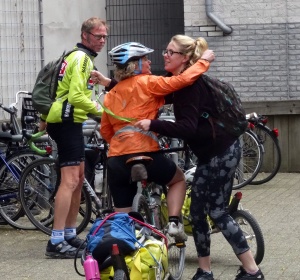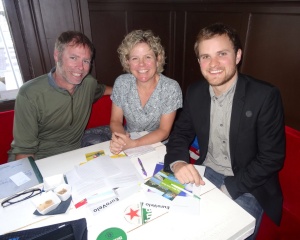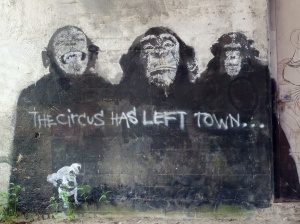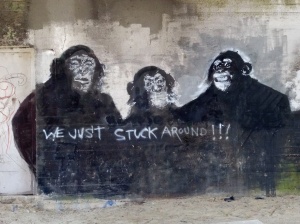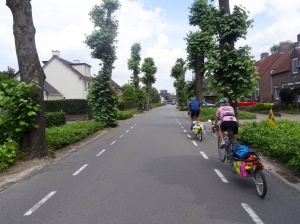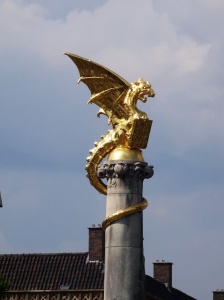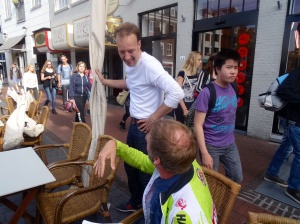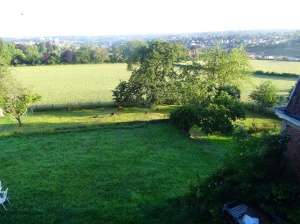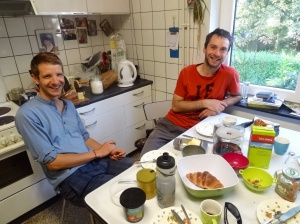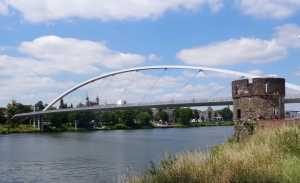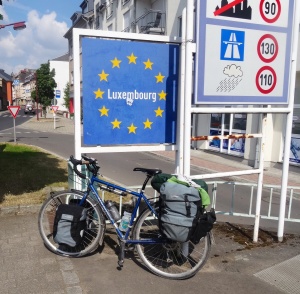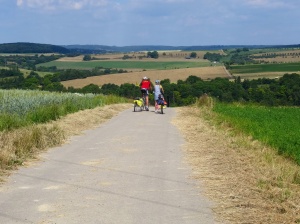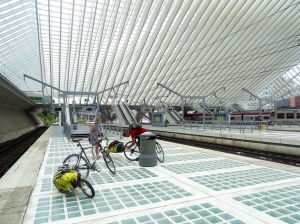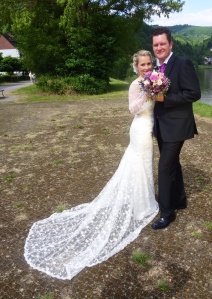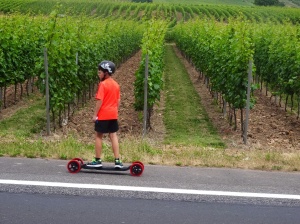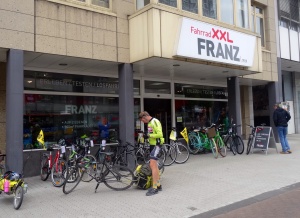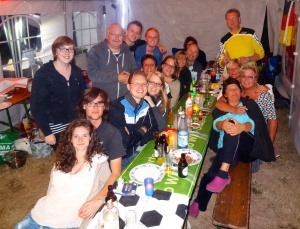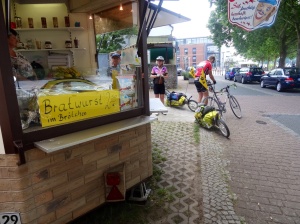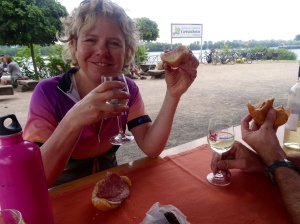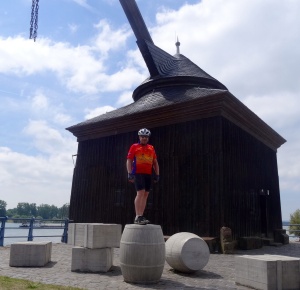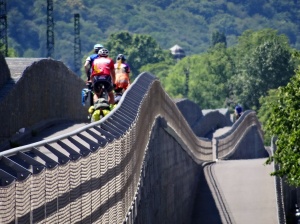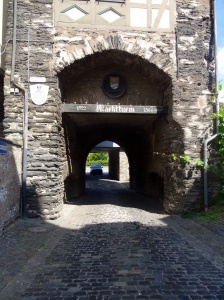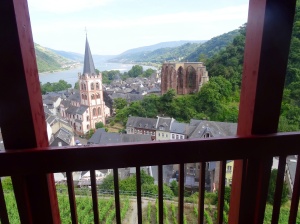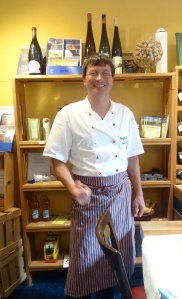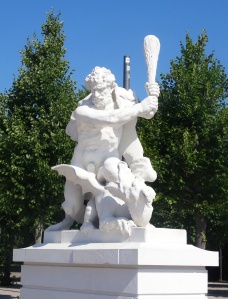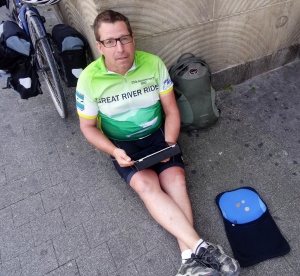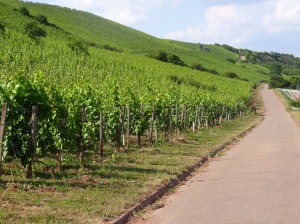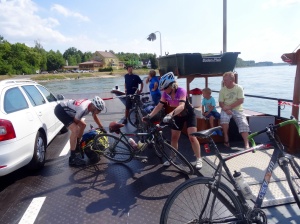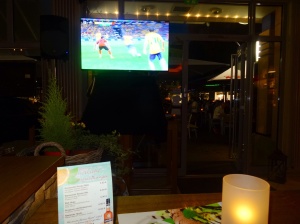
In the morning, Tom an Ginny took the train to Schiphol Airport where they would purchase super nice heavy-duty cardboard bike boxes for about 25 Euros. The boxes are so nice, you don’t even have to remove the wheels. And they will last several trips if they don’t get wet.
I would bike the 10 miles to the airport hotel and then return by train to fetch my heavy-duty plastic bike box, return to the hotel, drop off the box, and then back to the city. We would all meet at 6:00 at a bar in Amsterdam to watch the USA-Germany game.
I enjoyed a leisurely ride through Amsterdam, all on bike path, of course. I was navigating by feel from a map search I had made earlier and with the Garmin as a compass and road map. It is fun to bike around Amsterdam, called by some the “bicycle capital of the World”. Indeed, there are bikes literally everywhere; whizzing by on dedicated paths next to the side walk, in the streets, on the sidewalk, and piles and piles of bikes at the train station. And being the bike capital of the world, it is also the bike-theft capital of the world. In fact, I could not leave my bike unattended because I only had one lock that was not strong enough to frustrate the thieves.
The canals of Amsterdam radiate out in concentric half circles with intervening arms extending away from the river. Drawbridges, tour boats and house boats abound. I biked through beautiful Vondelpark. Even on a midweek day it was crowded with walkers, joggers, families, and people performing all manners of recreation.


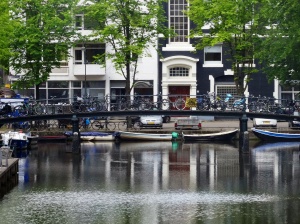


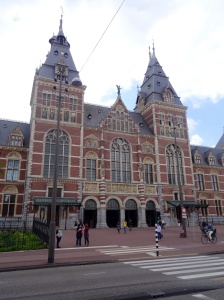

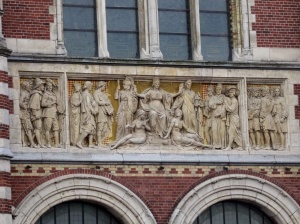
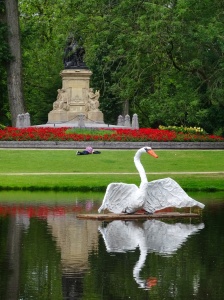
I got a little lost but also found some great graffiti under a highway overpass. (I know, I’m in Amsterdam and I’m looking at the graffiti.) I checked into my hotel and took the shuttle bus to the airport, took the train into the city, walked the half mile to Mari’s to get my bike box, and then returned along the same route.
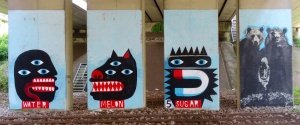
Logistics takes time. I realized I was never going to make it for the 6:00 game back in the city. The hotel shuttlebus leaves immediately after stopping and runs a predetermined route. It was already 5:45 and if I took my bike box up to my room, I would have to wait another 30 minutes for the shuttle to return. I ran up to the hotel reception, interrupted the gentleman in front of me and hurriedly explained that I needed to immediately reboard the shuttle and could they hold my bike box for me. As I was trying to explain this the bus pulled away, arcing through the parking lot to get back to the gated exit. I ran through the parking lot and, running alongside the bus, banging on windows. It did not stop. I had to sprint up to the drivers door and knock on that to get his attention. When I boarded I got some strange looks from the passengers.
But I made the second half of the soccer game. The USA was playing for a tie, or even a one goal loss, and that is what they got. They looked like a high school team compared to the Germans. But, based on goal-differential, they have advanced to the final round, leaving Ghana and Portugal behind.
After the game we strolled through the city, past Rembrandt Square, along the canals and narrow streets. In my haste I had left my camera back at the hotel. Too bad, because the evening light was exceptional and the photo opportunities infinite. So I just enjoyed my last night in Europe and it was good. Finally I hugged Tom and Ginny and thanked them for their company. I was lucky to have shared this adventure with them and I learned a lot. I am sure we will cross paths again. Knowing Tom, I am sure it will be “hardcore”, whatever and wherever it is.








